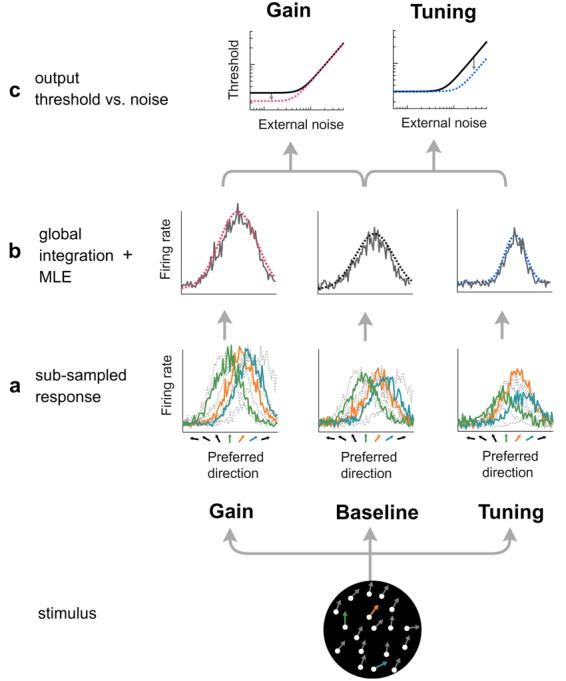Fig. 6.

Equivalent-noise model of global motion perception. Consider a collection of neurons in visual area MT, each with direction-tuned selectivity and spatially overlapping receptive fields. (a) When presented with a global-motion stimulus, each local motion element has the potential to evoke a population response from this bank of detectors. However, responses from a sub-sample of local elements are globally integrated to perform the task (sub-sampled responses shown here as solid colored lines) (b). Maximum likelihood estimation (MLE) is used to read out an estimate of global-motion direction from this pooled sub-sample, yielding expected thresholds as a function of external noise that mimics behavioral equivalent-noise functions. (c) Changing the gain and tuning of the population response causes changes in the model output: gain lowers thresholds solely at low external-noise levels, while tuning lowers thresholds primarily at high external-noise levels.
